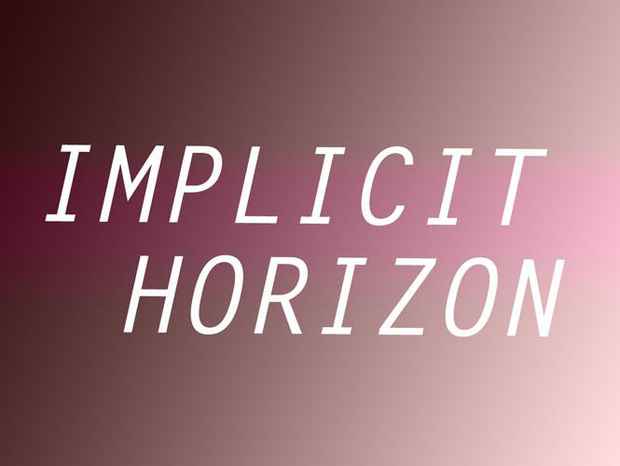“Implicit Horizon” Exhibition
Mixed Greens Gallery

This event has ended.
Mixed Greens presents a group exhibition of abstract works by Jarrod Beck, Alex Ebstein, Richard Tuttle, Maria Walker, Letha Wilson, and B. Wurtz. All six artists—a mix of emerging talent and established virtuosity—have a visceral approach to their materials that culminates in poetic results. Each uses everyday materials and simple gestures to allude to large, often complex ideas that remind the viewer of our vast landscape. Working in the space between painting, sculpture, assemblage, photography, and drawing, the artists have significant attachment to the physicality of the materials they use and carefully combine elements to have an impact that far exceeds the footprint of the work. Much is implied with quiet gestures that carry great gravitas.
Jarrod Beck’s architectural installations emerge from an elegant drawing process. He repurposes manmade building materials—such as lumber, roofing materials, and PVC pipes—in compositions that allude to geologic and natural forces. The materials appear to be forever expanding, while also in the midst of excavation. Pieces made of paper, for example, appear to be carved from wood, shifting under their perceived weight. Off balance and appearing to slide, the illusion creates an emotional unease that makes an association with seismic shift unavoidable.
Alex Ebstein’s mixed media abstractions have incorporated materials including string, yarn, enamel, found objects, and wax with a confidence that is both playful and profound. While she describes her work as 2-D, Ebstein’s pieces resist flatness and traditional expectations of painting. Through careful consideration of materials and composition, Ebstein is able to meditate on weighty subjects including the limitations of space and time and corporeal disintegration via the everyday. In her Stretching Specter pieces, white yoga mats are hung, slightly sagging. Stripped of their utility, texture becomes paramount and large cutouts reference wounds, excavation, and mapping. A framed grid drawing on an adjoining wall reinforces the pattern on the mat and the expansive, sublime nature of the grid itself. Pieces hang as artifacts referencing land mass and body mass, graphing ambiguous form in an Arp-like fashion.
Richard Tuttle is one of the most significant artists working today. Since the mid-1960s, he has created an extraordinarily varied body of work that eludes historical and stylistic categorization. His ability to draw the beauty out of humble materials set the stage for many of the artists included in this exhibition. Language, spatial relationships, and scale are central concerns for the artist, who maintains an acute awareness of the viewer’s aesthetic experience. The small-scale sculpture Section I, Extension F, for example, is rich with detail, compelling the viewer to consider it from all angles and perspectives. The subtle shadows and the slightest folds of paper create an intimate, and ultimately spiritual, experience that invites the viewer to consider the boundary that exists between the artificial and natural world, between the organic and the handmade.
Maria Walker constructs irregularly shaped canvases, often leaving exposed stretchers, that develop into objects situated between painting and sculpture. Her ability to equalize the importance of the stretcher, canvas, and paint highlights the materiality of each medium and makes each element essential to the piece. The three-dimensional piece, Untitled, alludes to the landscape from her native state of Ohio while also opening up conversations related to windows, alchemy, space, scale, deconstruction, and reconstruction. There is a physicality of making and a physical engagement required of the viewer that makes these paintings remarkable.
Letha Wilson creates photo-based sculptures that address the limitations of photography as a means of representation. In her own words, she uses “sculptural intervention to compensate for the photograph’s failure to encompass the physical site it represents.” As a result, the sense of tactility and materiality is heightened, creating textured sculptures that both mimic and confront the landscape.
B. Wurtz has worked for decades, making ever-inventive sculptural objects and wall-based works that channel the magical possibilities of everyday objects. Wurtz has used food wrappers, plastic bags, mop handles, plastic caps, shoelaces, and funnels to create pieces loosely categorized as assemblage or found object art. But according to the NY Times, “he transcends this tidy definition by means of a clarity best described as classical.” The materials are never disguised or gilded to be anything they’re not, but their combinations and positioning seduce the viewer by a larger, always suggestive effect.
Media
Schedule
from February 13, 2014 to March 15, 2014
Opening Reception on 2014-02-13 from 18:00 to 20:00
Artist(s)
Jarrod Beck, Alex Ebstein, Richard Tuttle, Maria Walker, Letha Wilson, B. Wurtz